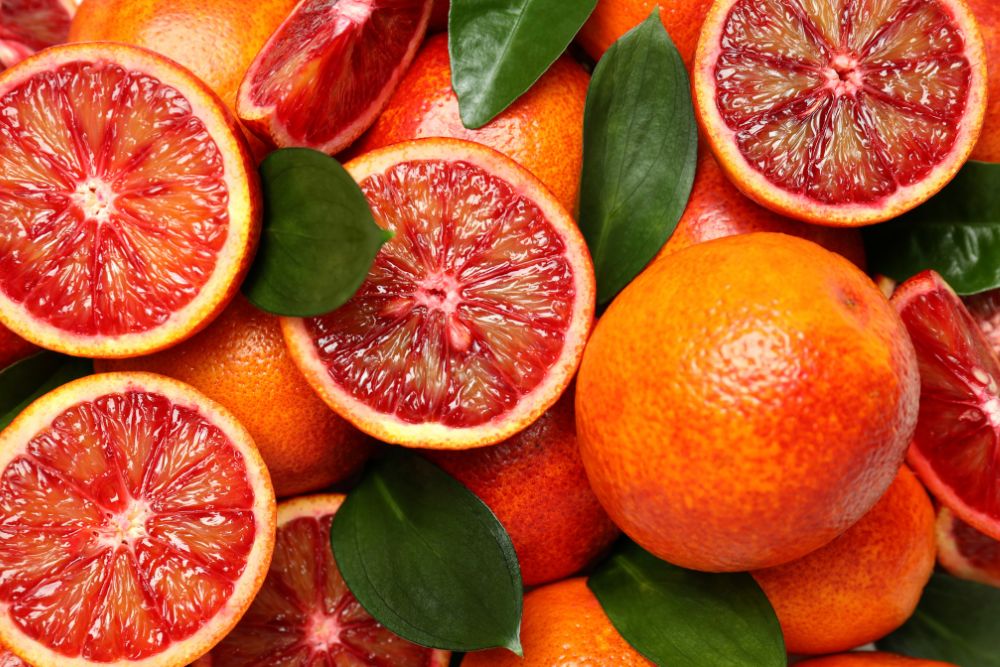Red oranges (Citrus sinensis), better known as ‘blood oranges’, are assumed to come from China or southern Mediterranean regions, but that hasn’t been confirmed. They are most well-known in Italy and Spain but have been growing in popularity in the United States. These fruits have bright orange skin with a striking red to almost black colored flesh inside. Blood oranges were first documented in the 17th-century Italian opera Hesperides in 1646. Several varieties exist, but the Tarocco, the Moro, and the Sanguinello are most common.
Blood orange juice contains many different antioxidant compounds including polyphenols, anthocyanins, and Vitamin C. Other nutrients in the fruit are calcium, potassium, phosphorus, and traces of iron and zinc. Shown to support the cardiovascular system, blood oranges support healthy vascular function by improving blood flow and reducing inflammation. Additionally, one small six-month study found taking 400 mg of Moro blood orange extract improved weight loss in overweight but otherwise healthy people.
This particular fruit has a complex flavor that tastes sweet with a hint of raspberry. Blood oranges can be consumed in several ways including raw, cooked, or juiced. It can be used as a flavoring agent with adult beverages or teas. The oranges can be sliced and added to water, used to add flavor to smoothies, etc. These are grown in the United States, mainly in California, Texas, Arizona, and Florida. You can typically find them in late winter-early spring in some grocery and health food stores nationwide.
Resources:
Briskey, David, et al. 2022. “Effectiveness of “Moro” Blood Orange Citrus sinensis Osbeck (Rutaceae) Standardized Extract on Weight Loss in Overweight but Otherwise Healthy Men and Women–A Randomized Double-Blind Placebo-Controlled Study.” Nutrients; 14(3); 427. doi:10.3390/nu14030427
Grosso, Giuseppe, et al. 2013. “Red Orange: Experimental Models and Epidemiological Evidence of its Benefits on Human Health.” Oxidative Medicine and Cellular Longevity; 2013: 157240. doi:10.1155/2013/157240

